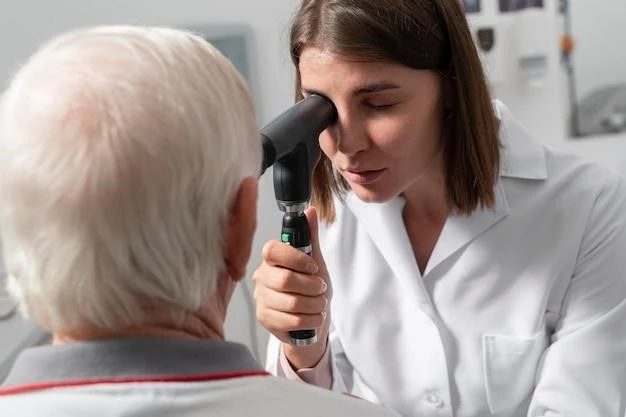Introduction to Medical Conditions
Medical conditions encompass a wide spectrum of disorders, illnesses, and abnormalities that affect individuals. In this article, we delve into three specific conditions⁚ glossopalatine ankylosis, micrognathia, and ear anomalies. These conditions fall under the category of congenital defects, highlighting the complex nature of health issues that individuals may face from birth.
Glossopalatine ankylosis is a condition characterized by the fusion of the tongue to the palate, limiting movement and affecting speech and feeding abilities. Micrognathia, on the other hand, refers to a condition where the lower jaw is undersized or abnormally small, leading to potential issues with breathing, eating, and facial development.
Ear anomalies encompass a range of malformations that can affect the external, middle, or inner ear. These anomalies can result in hearing loss, balance problems, and aesthetic abnormalities. Understanding these medical conditions is crucial in providing appropriate care and interventions to individuals affected by these disorders.
By examining glossopalatine ankylosis, micrognathia, and ear anomalies, we aim to shed light on the pathology, impact, and potential treatments associated with these conditions. Through this exploration, we can gain insight into the challenges faced by individuals with these congenital defects and the importance of addressing health issues early on to optimize outcomes and quality of life.
Understanding Glossopalatine Ankylosis
Glossopalatine ankylosis is a rare congenital disorder characterized by the fusion or adherence of the tongue to the palate. This condition can significantly impair the normal functions of the tongue, such as speech, swallowing, and taste sensation. Individuals affected by glossopalatine ankylosis may experience difficulties in articulating sounds, leading to speech impediments.
The fusion of the tongue to the palate in glossopalatine ankylosis restricts the movement of the tongue, limiting its mobility within the oral cavity. This restriction can contribute to feeding challenges, as the tongue plays a crucial role in manipulating food and facilitating the swallowing process. Additionally, the fusion can affect the development of the palate and oral structures.
Common symptoms of glossopalatine ankylosis include speech delays, difficulty eating certain foods, drooling, and a high arched palate. Early diagnosis and intervention are essential in managing glossopalatine ankylosis effectively. Treatment options may include surgical procedures to release the tongue from the palate and restore normal tongue function.

Individuals with glossopalatine ankylosis may benefit from multidisciplinary care involving speech therapists, dentists, and oral surgeons to address the functional and aesthetic aspects of the condition. By understanding the causes, symptoms, and potential treatments for glossopalatine ankylosis, healthcare professionals can provide comprehensive care to improve the quality of life for individuals affected by this disorder.
Exploring Micrognathia
Micrognathia is a medical condition characterized by an underdeveloped or abnormally small lower jaw. This congenital abnormality may lead to various health issues, including difficulty breathing, feeding problems, and facial asymmetry. Micrognathia can also impact speech development and dental alignment.
Individuals with micrognathia may exhibit a receding chin and a prominent overbite due to the disproportionate size of the lower jaw. In severe cases, micrognathia can result in obstructive sleep apnea, a sleep disorder characterized by pauses in breathing during sleep. Prompt diagnosis and intervention are crucial in managing the respiratory and craniofacial consequences of micrognathia.
Treatment for micrognathia depends on the severity of the condition and its impact on the individual’s health and well-being. Orthodontic interventions, surgical procedures to correct jaw positioning, and airway management strategies may be recommended to address the functional and aesthetic aspects of micrognathia.
Given the potential complications associated with micrognathia, a multidisciplinary approach involving oral and maxillofacial surgeons, orthodontists, and respiratory specialists is often necessary to provide comprehensive care to individuals with this condition. Understanding the implications of micrognathia and implementing appropriate treatment strategies can help improve the quality of life and long-term outcomes for affected individuals.
Unpacking Ear Anomalies
Ear anomalies encompass a broad spectrum of congenital malformations affecting the external, middle, or inner ear structures. These anomalies can manifest as structural deformities, functional impairments, or sensory deficits, leading to various health issues and potential complications. Understanding the diverse nature of ear anomalies is crucial in providing accurate diagnoses and tailored treatment plans.
External ear anomalies, such as microtia or anotia, involve abnormalities in the development of the outer ear, resulting in cosmetic differences or hearing deficits. Middle ear anomalies, including ossicular malformations or chronic otitis media, can impact hearing function and contribute to recurrent ear infections. Inner ear anomalies, such as vestibular disorders or congenital sensorineural hearing loss, affect balance and auditory perception.
Individuals with ear anomalies may experience a range of symptoms, including hearing loss, ear discharge, ear pain, vertigo, or tinnitus. Correctly identifying the type and extent of ear anomaly is essential for implementing appropriate interventions, which may include hearing aids, surgical reconstructions, or auditory rehabilitation programs.
Collaboration between otolaryngologists, audiologists, and otologists is vital in managing ear anomalies effectively. By utilizing diagnostic imaging techniques, audiometric assessments, and surgical interventions, healthcare professionals can address the specific needs of patients with ear anomalies and improve their auditory function and quality of life. Ongoing research and advancements in ear anomaly treatment can further enhance outcomes and support individuals in coping with these complex medical conditions.
Linking the Conditions⁚ Interplay and Impact
The interplay between glossopalatine ankylosis, micrognathia, and ear anomalies can have significant implications for individuals affected by these conditions. While each disorder presents unique challenges, there are interconnected aspects that can influence the overall health and well-being of individuals with multiple congenital defects.
For instance, individuals with micrognathia may experience difficulties in oral functions such as speech and swallowing, which can be further exacerbated by the presence of glossopalatine ankylosis. The fusion of the tongue to the palate can compound feeding challenges and limit the mobility of the jaw during chewing and swallowing processes.
Similarly, ear anomalies can impact communication abilities and social interactions, adding an additional layer of complexity to the existing health issues. Hearing deficits resulting from ear anomalies can affect speech development and language acquisition, especially in individuals already struggling with articulation due to glossopalatine ankylosis.
Understanding the interconnected nature of these conditions is essential in developing comprehensive treatment approaches that address the multifaceted needs of individuals with glossopalatine ankylosis, micrognathia, and ear anomalies. Collaborative efforts between healthcare providers specializing in speech therapy, dentistry, otolaryngology, and audiology are crucial in optimizing outcomes and enhancing the quality of life for individuals facing these complex medical challenges.
Conclusion⁚ Addressing Congenital Defects and Health Issues
Congenital defects such as glossopalatine ankylosis, micrognathia, and ear anomalies present unique challenges that impact various aspects of an individual’s health and well-being. Early recognition, accurate diagnosis, and timely interventions are essential in managing these complex medical conditions and addressing the associated health issues effectively.
By understanding the distinct characteristics and potential complications of glossopalatine ankylosis, micrognathia, and ear anomalies, healthcare providers can tailor treatment plans to meet the specific needs of each individual. Multidisciplinary collaboration plays a crucial role in delivering comprehensive care that encompasses speech therapy, surgical interventions, orthodontic treatments, and auditory rehabilitation programs.
Addressing congenital defects requires a holistic approach that considers not only the physical manifestations of the conditions but also their impact on functional abilities, communication skills, and quality of life. Empowering individuals with access to specialized care, supportive resources, and ongoing monitoring can help them overcome the challenges associated with these complex medical conditions and achieve optimal outcomes.
By prioritizing early intervention, personalized care, and continuous support, healthcare professionals can make a significant difference in the lives of individuals affected by glossopalatine ankylosis, micrognathia, and ear anomalies. Through dedicated efforts to address congenital defects and associated health issues, we can enhance the well-being and long-term prognosis of individuals facing these challenging medical conditions.
